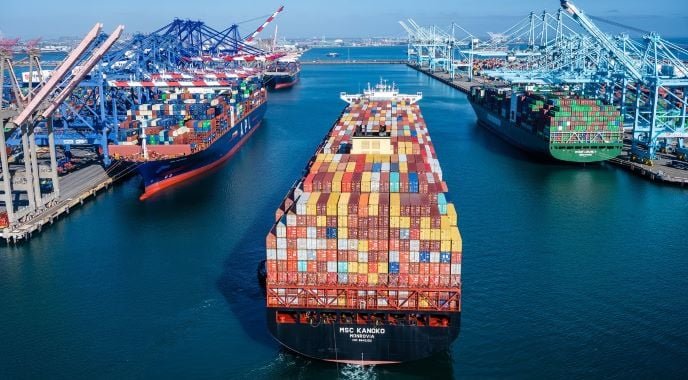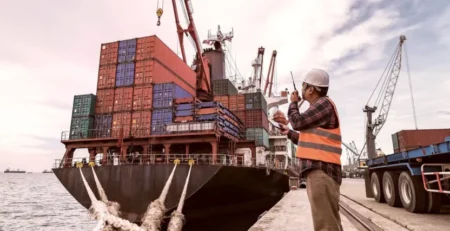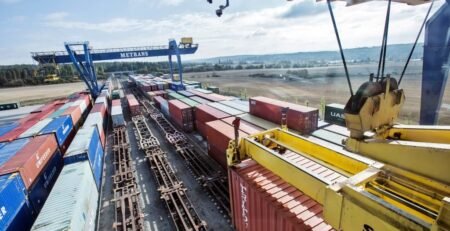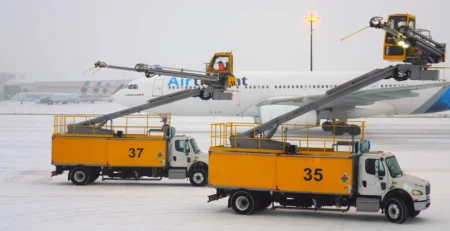Corridor Shift: How Middle Ports Are Becoming the Power Brokers of Global Shipping

By Maria Kalamatas – May 9, 2025
Tangier – April 25, 2025 | As shipping lines rethink their traditional East–West dominance, a new set of ports—once seen as peripheral—are stepping into the spotlight. From Morocco to Vietnam, middle-tier maritime hubs are being reimagined as central corridors for tomorrow’s trade flows.
“We’re witnessing a realignment of logistics power,” says Jonas Trelawney, a port infrastructure analyst at Seaflow Research. “Not through massive expansion, but through smarter positioning and strategic partnerships.”
Rerouting the Global Loop
The volatility of Red Sea passages and congestion at major gateways like Singapore and Rotterdam have made carriers look for more stable, responsive hubs. Morocco’s Tanger Med, for instance, has emerged as a prime transshipment anchor between West Africa, Europe, and the Americas—handling over 10.2 million TEUs in 2024.
At the same time, Haiphong Port in northern Vietnam has doubled its annual volume since 2020 by integrating rail connectivity with inland logistics zones tied to China’s supply chain diversification strategy.
Partnership Over Pure Scale
What sets these ports apart isn’t their size, but their role in network orchestration. New joint ventures between port authorities and major alliances—like the recent Maersk-MPCT collaboration in Tangier—are changing how capacity is distributed across the globe.
“It’s not just about handling containers anymore,” says Lamia Benchakroun, Director of Port Strategy at Tanger Med Zones. “It’s about who you connect to, and how fast you can react to change.”
Hybrid Port Models Are Rising
Many of these rising hubs are blending logistics functions—merging container, Ro-Ro, and air freight corridors into single operational zones. The Dominican Republic’s Caucedo Port, for example, now offers direct air-sea cargo flows for time-sensitive pharma and apparel goods destined for the U.S.
“We call them hybrid ports,” explains Trelawney. “They’re the logistics equivalent of multi-modal airports.”
Digital First, Physical Second
Digital twin simulation, AI-based slot reservation systems, and blockchain-enhanced customs have allowed these ports to leapfrog legacy ports weighed down by infrastructure debt. Many were born digital and are now defining service expectations for the post-pandemic cargo world.
Looking Ahead
The emergence of corridor-based strategy is replacing the old “mega port” mindset. As Trelawney puts it:
“The ports that will win the next decade aren’t the biggest. They’re the ones that know how to connect the fastest, the cleanest, and the smartest.”
The post Corridor Shift: How Middle Ports Are Becoming the Power Brokers of Global Shipping appeared first on The Logistic News.
Share this post
Related
Posts
Argentina, Brazil, and Mexico Fast-Track Regional Freight Agreements
BUENOS AIRES — July 4, 2025Faced with weeks of delayed cargo and unstable ocean routes, Latin America’s biggest economies are...
European Rail Freight Gathers Pace as Transit Times Improve in Poland
WARSAW — July 4, 2025Freight rail in Poland is accelerating, signaling a welcome turnaround for European inland transport. New data from PKP...
Freight Delays Mount at Toronto Pearson After Two Days of Storm Disruptions
TORONTO — July 4, 2025Cargo operations at Toronto Pearson International Airport are struggling to recover after two consecutive days of...
HIVED Secures $42M to Bring Greener Deliveries to More UK Cities
LONDON — July 4, 2025HIVED has raised $42 million to expand its all-electric parcel delivery service. The London-based startup says...





